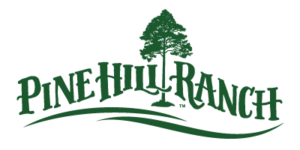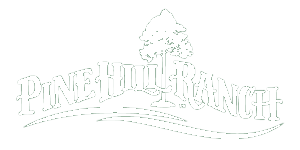Horsemanship is a term that encompasses the skills, knowledge, and understanding needed to form a harmonious relationship with a horse. It involves treating the horse with respect and working with its natural instincts and behavior to create a positive and safe riding experience. Horsemanship is the foundation of all horse riding disciplines and is essential for both horse and rider. In this blog, we will explore the definition of horsemanship and the importance it holds in horse riding. We will also provide an overview of the foundations of horse etiquette, including the principles of natural horsemanship. Whether you are a seasoned rider or just starting out, this blog will give you a deeper understanding of the art of horsemanship and its role in creating a safe and enjoyable riding experience.

Understanding the Horse
Horses are social animals with unique instincts and behaviors that are important for riders to understand and respect. One of the key aspects of natural horsemanship is understanding the horse, including its natural behavior and instincts.
Horses are herd animals and have a strong instinct to be part of a group. They also have an instinctual fear of predators, including humans. Understanding these instincts can help riders work with their horse in a respectful way and in line with the horse's natural behavior.
Building a bond with a horse is critical to successful horsemanship. A horse that trusts and respects its rider is more likely to respond positively and behave in a safe manner. This bond can be built through understanding horse communication, including body language, vocal cues, and other forms of non-verbal communication.
In order to build a strong relationship with a horse, it is important to spend time with it on the ground, getting to know its individual personality and behavior. Groundwork activities, such as leading, haltering, and grooming, can help to build trust and confidence between horse and rider.
By understanding the horse and building a bond with it, riders can create a safe and positive riding experience. Natural horsemanship focuses on working with the horse's natural behavior and instincts to create a harmonious relationship based on mutual trust and respect.
Western Horsemanship
In western horsemanship, riding involves the use of specific equipment and gear to communicate with the horse. Proper understanding and use of the equipment, such as the saddle, bridle, and stirrups, is important for both the safety and effectiveness of the ride.
Riders in western horsemanship use basic riding commands, such as "walk," "trot," and "stop," to communicate with the horse. It is important for riders to develop a clear and consistent system of communication to ensure effective communication with the horse.
In addition to understanding the equipment and gear used in riding, developing a balanced and effective riding style is also important. This includes proper posture, effective use of the legs and seat, and understanding the horse's movement and balance.
Practicing these skills regularly can help riders improve their riding abilities and create a more enjoyable experience for both horse and rider. Whether you are a seasoned rider or just starting out, mastering the basics of western horsemanship riding is a key component to becoming a confident and skilled horseman.
English Horsemanship
English horsemanship is a style of horse riding that is traditionally associated with equestrian sports such as show jumping, dressage, and eventing. It emphasizes balance, control, and grace, with the rider using light, indirect reins, and a more upright body position.
In English horsemanship, the rider strives to achieve a harmonious partnership with the horse, using gentle yet effective techniques to communicate with the horse. The rider's seat is a key aspect of English riding, with an emphasis on maintaining balance and stability while allowing the horse to move freely.
English riding uses an English saddle with a flatter seat and shorter stirrups, and riders often wear riding helmets and boots. English horsemanship also places a strong emphasis on grooming and presentation, with horses turned out in pristine condition for competitions and events.
Regardless of whether a rider is competing in equestrian sports or simply riding for pleasure, the principles of English horsemanship provide a foundation for safe and effective riding. As with any style of horse riding, ongoing education and training are important for continued growth and improvement in English horsemanship skills.
Horsemanship Skills and Techniques
Horsemanship skills and techniques are important to be a responsible and competent horse owner. These skills include grooming and tacking up the horse, leading and tying up the horse, and basic first aid for horses. Some of the basic techniques include:
- Understanding horse behavior: Knowing how horses think, feel, and behave is essential for building a safe and positive relationship with them.
- Proper handling: Learning how to lead, tie, groom, and pick up a horse's feet are essential skills for horse owners to know.
- Grooming: Regular grooming helps keep a horse clean and healthy, as well as allows you to check for any signs of injury or discomfort.
- Feeding: Understanding what type of food and how much to feed a horse is important for maintaining their health and weight.
- Riding techniques: Whether you are a beginner or an experienced rider, learning riding techniques such as how to mount, dismount, and control the horse is essential for building a safe and enjoyable relationship with your horse.
Grooming and tacking up involves preparing the horse for riding or handling. This includes brushing the horse's coat, checking for injuries or abnormalities, and properly fitting the horse with a saddle and bridle.
Leading and tying up involves safely managing the horse while not being ridden. This includes proper haltering and leading techniques, safely tying the horse up and ensuring its comfort and safety.
Basic first aid for horses is an essential aspect of horsemanship, as horses are prone to injury and illness. This includes understanding the signs of injury or illness, properly treating cuts and wounds, and knowing when to seek veterinary care.
By mastering these horsemanship skills and techniques, riders and horse owners can ensure the well-being and safety of their horses, as well as their own safety and success in horse-related activities.
Horse Etiquette in Action
Horse etiquette is an important aspect of responsible and considerate horsemanship, and it is crucial to understand how to behave around horses and other riders. This includes showing respect for ho
rses and riders, exhibiting proper horse behavior in the stable and at events, and following proper etiquette when riding in groups.
Showing respect for horses and riders involves understanding and following horse safety rules and being mindful of the needs and feelings of both horses and other riders. This includes avoiding aggressive or dangerous behavior and being considerate of other riders and their horses.
Proper horse behavior in the stable and at events is important for maintaining a safe and respectful environment for both horses and riders. This includes following rules for handling horses, such as never approaching a horse from behind, and being mindful of horse behavior, such as avoiding sudden movements that may startle the horse.
When riding in groups, it is important to follow proper etiquette to ensure the safety of all riders and horses. This includes riding in a single file, following the lead rider, and allowing enough space between horses to avoid collision.
At Pine Hill Ranch, we are dedicated to providing top-notch equestrian therapeutic horsemanship programs that prioritize the well-being and safety of both our riders and horses. Our programs are guided by the principles of esteemed organizations like the Equine-Assisted Therapies (EAT) and the Professional Association of Therapeutic Horsemanship International (PATH International), ensuring that our riders receive the highest quality care and support while they journey towards healing and growth with horses.. These programs are designed to promote the physical, emotional, and cognitive well-being of riders through horse-related activities, and horse etiquette is an important component to ensuring the success and safety of these programs.
Conclusion
In conclusion, horsemanship and horse etiquette form the foundation of responsible and considerate horse riding and horse ownership. Understanding the natural behavior and instincts of horses, developing a bond with them through groundwork and riding, and following proper horse etiquette are all important aspects of successful horsemanship.
Whether pursuing horsemanship through western horsemanship, certified horsemanship association programs, or equestrian therapeutic horsemanship, ongoing learning and improvement are key. Horse riding and horsemanship can be a lifelong passion, and continuing education and development of horsemanship skills is important to maintaining a safe and enjoyable horsemanship experience.
At Pine Hill Ranch, we believe in the power of horsemanship and horse riding to bring joy and purpose to your life. Whether you're just starting out or looking to improve your skills, our experienced trainers and top-notch facilities are here to support you. Join us on this incredible journey and become a part of our horse-riding community today! Visit our website or give us a call to learn more and schedule your first lesson.
_128a3c53fe39320dad75a5a13404e1c0_800.jpg)

